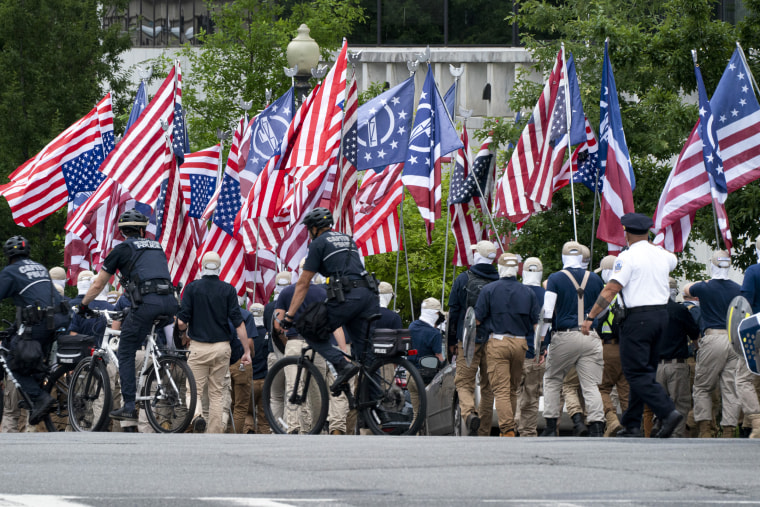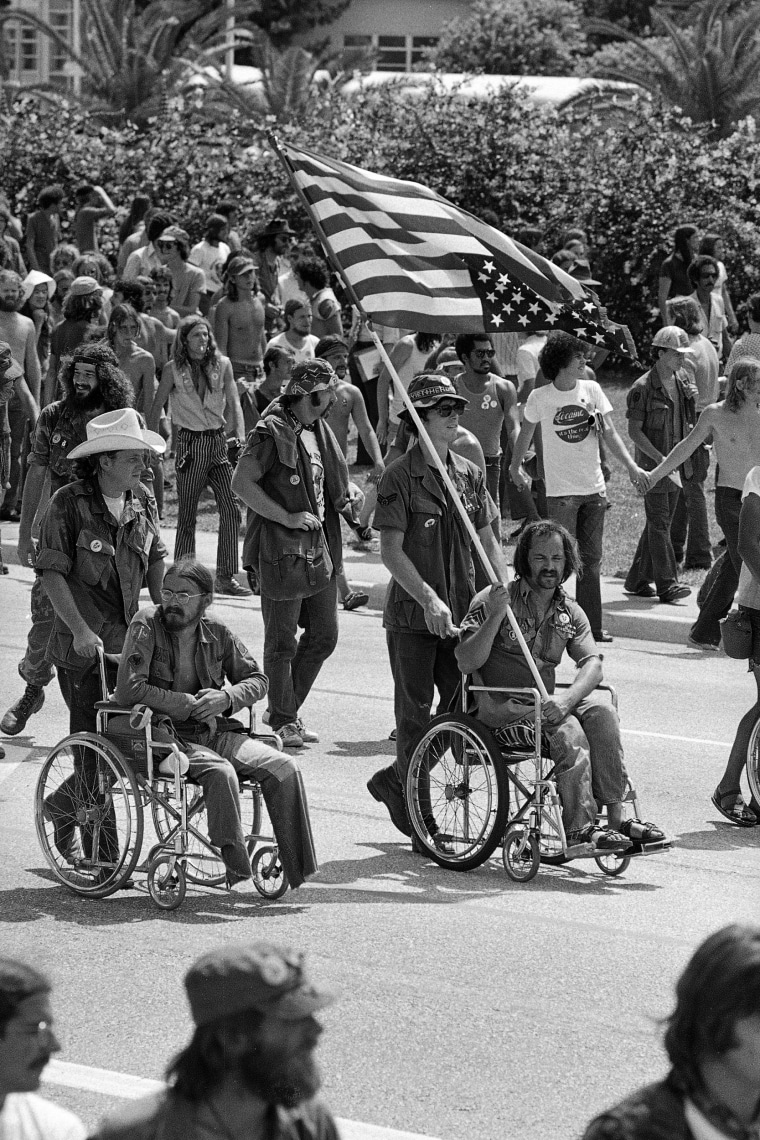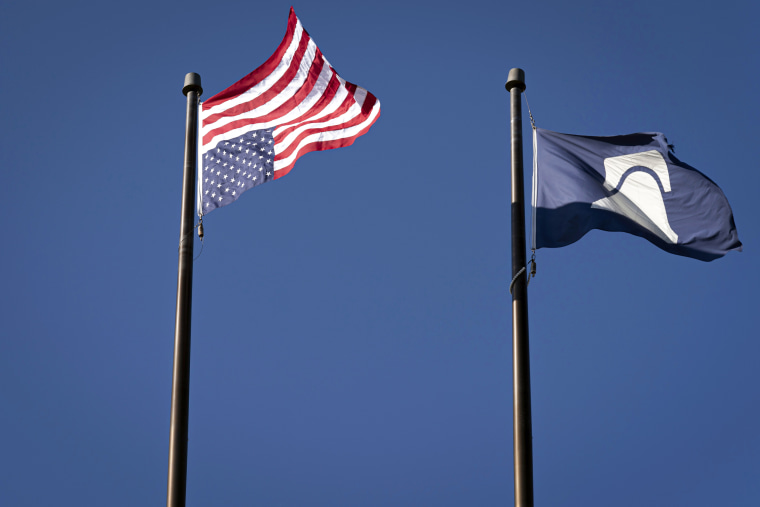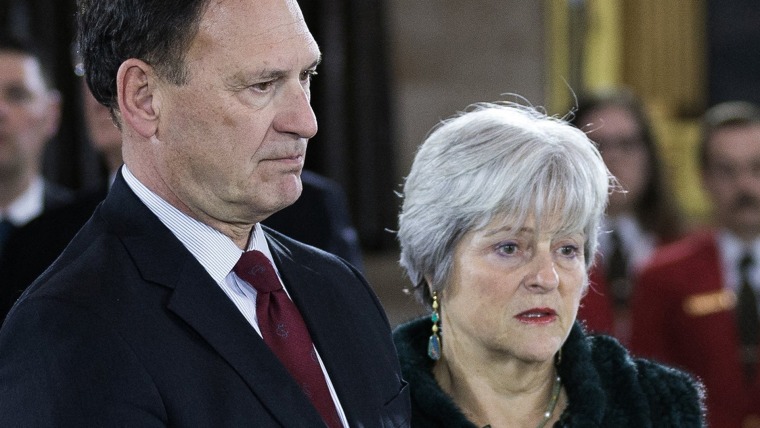Normally I observe the arrival of Flag Day on my calendar with complete indifference. This year was different. No, I haven’t suddenly embraced vexillology — the study of flags — as a hobby. But I have been struck by a newly conspicuous symbol on the right: the upside-down American flag.
After former President Donald Trump was convicted of falsifying business records, a number of his supporters posted upside-down flags on social media, including Georgia GOP Rep. Marjorie Taylor Greene and Ali Alexander, an organizer of the Jan. 6, 2021, “Stop the Steal” rally. The text accompanying Alexander’s inverted flag read: “No one is coming to save us. We must.”
And The New York Times and The Washington Post have recently reported that Supreme Court Justice Samuel Alito’s wife flew an upside-down American flag outside their Virginia home in January 2021. Earlier that month, some right-wing protesters who stormed the U.S. Capitol brandished upside-down flags.
It reflects a belief among these right-wing nationalists that America has gone fundamentally awry — and that they alone can fix it.
What’s curious about all this is that until recently, the upside-down American flag has more commonly been associated with left-wing protests — perhaps most notably in demonstrations against the Vietnam War. Conservatives have long objected to protesters burning the American flag or in any way defacing it. Yet here they are distorting this esteemed symbol as a way to express themselves.

But symbols are appropriated and reappropriated by different groups all the time. And it seems fitting that the upside-down flag has become a potent expression of MAGA radicalism. It reflects a belief among these right-wing nationalists that America has gone fundamentally awry — and that they alone can fix it.
According to historians, the use of inverted flags dates back to at least the 17th century. Lacking communication technology such as radios, sailors inverted flags to indicate that they were in some kind of emergency such as having a man overboard or being trapped in the ice. American ships used this practice as far back as the 18th century.
Over time, this practice became obsolete, however, and inverting a U.S. flag became associated with symbols of protest. An inverted flag was draped above a stage at a prominent slave abolitionist rally in the mid-19th century. Marc Leepson, a historian and the author of “Flag: An American Biography,” told me that during the Vietnam War, anti-war protesters displayed both conventional American flags and inverted flags during demonstrations. People also sometimes placed American flag stamps upside down on their envelopes in a quiet gesture of disapproval of the war. “It was the first time in U.S. history when the flag was used during wartime as a symbol of protest,” Leepson said.

And yet even in that same historical moment, one could see how the flag provided ripe terrain for contesting the meaning of America. Ted Kaye, secretary of the North American Vexillological Association, noted that during one anti-Vietnam War parade in New York, a group of construction workers seized a flag from the protesters and said they didn’t deserve to claim the American flag.
“The pendulum swings back and forth between who wants to claim the flag as their own on the political spectrum,” Kaye said. That swing leads to upside-down American flags sometimes being symbols for deeply idiosyncratic stances. In 2007 in New York, a former U.S. soldier angered a neighbor by flying an upside-down flag outside his house; he cited both the Iraq War and the firing of right-wing radio host Don Imus for making racist remarks as the basis for his show of dissent.
In the Trump era, the upside-down flag has gained traction as a symbol of right-wing nationalism, wielded by MAGA politicians and activists who contest the legitimacy of the 2020 election. And it makes intuitive sense for them to try to wrest this symbol from the left. Burning a flag suggests pure rage or total opposition to the existence of the American polity. Inverting a flag is a signal of simultaneous pessimism and optimism — a belief that things are the opposite of the way they should be, but that those things can be corrected. The symbolism of the upside-down American flag also seems consonant with Trumpian — and fascistic — beliefs that America has fallen and is in need of extreme measures to experience redemption and rebirth. Notably, some right-wing social media users have posted the term “civil war” alongside their inverted flags.

The upside-down flag is not the only sign of the American right’s evolution. In response to Black Lives Matter, counterprotesters began to fly a “thin blue line flag” — an American flag with a blue line in it symbolizing the police. The “Appeal to Heaven” flag has become a symbol of Christian nationalism — and was also flown outside Alito’s vacation home in New Jersey. At a time when the American right has experienced tremendous ideological rupture and change, flags serve as a valuable technology for its factions to signal new forms of identity and unity.
Growing up during the 9/11 era, I generally saw the right as counseling extreme reverence for the standard American flag. Rather than an apolitical sign of respect for the victims, it often stood as a powerful symbol of jingoism — perhaps most iconically when an American flag was used to cover the face of a Saddam Hussein statue during the Iraq War. Now, a standard American flag appears inadequate as a tool for the right. The nationalist turn involves a mistrust of standard displays of unity and the status quo. It suggests something more extreme has to be done to make things right.

